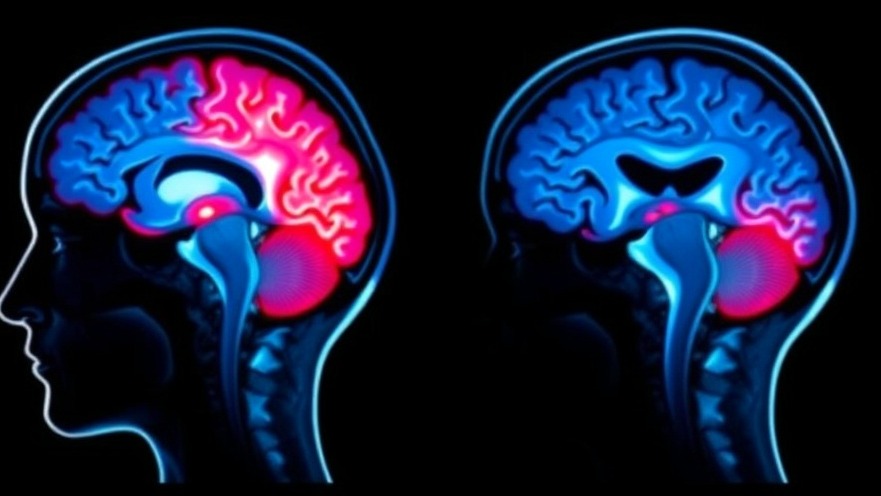
Unleashing Insights: The Importance of the Brainstem
The brainstem plays a critical role in maintaining communication between our brain and bodily organs, fundamental for emotion regulation, mental health, and overall wellbeing. At the heart of this interaction is the nucleus tractus solitarii (NTS), a vital structure that mediates signals via the vagus nerve. Surprise awaits as a revolutionary imaging method promises new insights into the function of the NTS.
Introducing D-PSCAN: A Breakthrough Imaging Method
Recent advancements by researchers at the National Institute for Physiological Sciences have led to the creation of a groundbreaking imaging technique termed D-PSCAN, or Double-Prism-based brainStem imaging under Cerebellar Architecture and Neural circuits. This innovation allows for minimally invasive visualization of the NTS neural activity in living mice, paving the way for significant discoveries in neuroscience.
Why Now? The Need for Enhanced Observation Techniques
Traditionally, studying the NTS posed challenges due to its deep location beneath the cerebellum, which is vital for motor coordination and emotional regulation. Prior methods often required the removal of the cerebellum, severely compromising its functions. As lead author Masakazu Agetsuma points out, “A method to observe the NTS while preserving cerebellar function has been needed.” The D-PSCAN method fills this crucial gap, enabling a simultaneous understanding of the brain's emotional processing and bodily functions.
The Breakthrough: Evaluating NTS Responses
Researchers evaluated the D-PSCAN method through electrical stimulation of the vagus nerve, observing specific activation thresholds of the NTS and variations based on stimulation parameters. This granular understanding reveals the brain’s adaptive responses and the intricate interplay between physiological signals and emotional states.
The Role of Vagus Nerve Stimulation in Therapeutics
Vagus nerve stimulation (VNS) has already gained traction in clinical applications for treating conditions like drug-resistant epilepsy. As research reveals, the NTS's response to VNS opens doors for new treatment avenues, particularly in depression and other psychiatric disorders. These findings underscore how enhanced imaging techniques can bolster therapeutic interventions and improve patient outcomes.
Potential Impacts on Patient Care
For concierge health practitioners, staying ahead of emerging technologies in neuroscience is paramount. Understanding the D-PSCAN method and its implications not only enriches a practitioner’s knowledge base but can also inform treatment strategies tailored to individual patients, particularly those with complex emotional and physiological needs.
What's Next? Future Directions and Research Opportunities
As the D-PSCAN method gains traction, future research could explore its applications beyond animal studies to human clinical settings. The ability to visualize the NTS and the vagus nerve’s effects on mental health offers vast implications for the management of psychiatric and neurological conditions. This could redefine treatment protocols and enhance diagnostic precision.
Conclusion: Why This Matters for Health Practitioners
In a landscape where the brain–body connection is increasingly recognized, advancements like D-PSCAN empower health practitioners with the tools needed to understand, evaluate, and treat complex patient needs effectively. Embracing these insights allows for the provision of tailored care and reinforces the significance of the mind-body connection in health.
For those in the medical field, it’s crucial to keep abreast of such breakthroughs in neuroscience. Not only do they enrich patient care, but they also represent the forefront of technology’s role in enhancing health outcomes.
Call to Action: Stay informed about the latest advancements in medical technology to better serve your patients. Knowledge is the key to providing superior care. Explore these emotional and physiological insights further and integrate them into your practice today!
 Add Row
Add Row  Add
Add 




Write A Comment